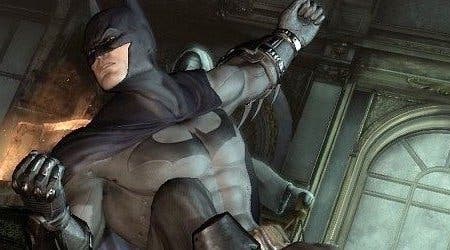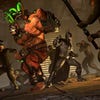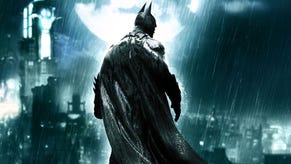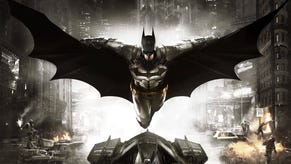Batman: Arkham City
Where does he get those wonderful toys?
It's a role-playing game, when you get down to it. Not just because you gain XP, engage in a little light levelling and are free to sharpen your combat skills one upgrade at a time. It's a role-playing game in the most literal sense of the phrase, a game in which you're encouraged to give in to the fantasy, and to see what life is like when it's composed of rooftop brawls and zip-line getaways. Animations, traversal mechanics, takedowns: they're all building towards the same thing. In Arkham City, you become Batman.
And it's an easy role to play, partly because Arkham Asylum already laid out such an excellent framework, delivering not just the power of the Dark Knight but also his cunning and his tightly controlled rage. And partly because, if you're like me, you've secretly been Batman since primary school anyway.
Pretending a series of bedrooms and attics were subterranean strongholds. Daydreaming of dangling cyclists over the ledges of skyscrapers when they rode their freakin' bikes on the sidewalk. Promising to avenge your parents' deaths, even though they were still alive and well and sat in the next room, arguing about why the Morris Minor wouldn't start that morning.
I must be a creature of the night! You said it, Bruce. We've been Batman for years, if only somebody would notice. Arkham City just makes it all a little less awkward. It's a Batman simulator as much as a Batman game. It's wish fulfilment on a grand scale.
The kind of scale, in fact, that only video games can deliver, creating courtyards, avenues and entire neighbourhoods mired in crime and gothic mystery. The set-up is simple: the former warden of Arkham Asylum has become Gotham's mayor, and he's turned the city's slums into an expanded loony bin. Surrounded by guard towers, spotlights and barbed wire, psychopaths have taken back everything from the Bowery to Crime Alley - where you-know-what happened - and the old GCPD building. Now, under the all-seeing eyes of Dr Hugo Strange, these inmates have started to form gangs and carve up the territory.
Into this landscape of uneasy truces and shifting alliances comes Batman, and the story that unfolds is a race-tuned comic-book narrative in the style of Hush or The Long Halloween: a story built of short, punchy escapades, where any plot-twist is excusable as long as it lands you with a neat gadget or sends you pinwheeling from one supervillain cameo to the next.
Rocksteady makes greedy use of the fact that Batman hasn't only got the best backstory, he's got the best enemies too. Arkham City is positively exhaustive with its cast, roping in an astonishing range of murderous megastars for the main campaign and then flinging out even more as you start to explore the side-quests. Given the kind of inmates we're dealing with here, it's suitably gratuitous.
The very best of these inmates have been given the Rocksteady once-over, emerging with unlikely kinks in their iconic elements. Just as the first adventure played up Joker's skills as a deadly kind of game show host, Penguin's been transformed into a grubby east-end thug with a beer bottle ground into his face in place of a monocle, while Mr Freeze is otherworldly and tragic in his refrigerated spacesuit and Hugo Strange is hulking yet somehow frail: hypnotic in voice, but measured and occasionally even sympathetic in person.
The city is the real star, though. If the first game hinged on a calculated deconstruction of Bruce Wayne's psyche, the sequel is more concerned with excavating the past of Gotham itself - and plotting its possible future.
It's a funny-books spin on Chinatown, at heart. The narrative drills down under the streets, past abandoned railway terminals and fragmented tenements and into a strange, clockwork fantasyland based on a 19th-century World's Fair. Then it heads upwards again, past circling news choppers and roving blimps and towards the lofty Art Nouveau ironwork of Wonder Tower, where mysterious forces are battling for the soul of this depraved metropolis.













